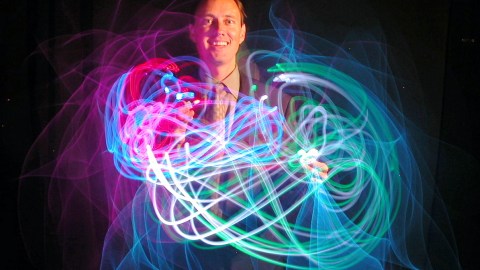Scientists Built a Power Generator for Use Inside the Human Body

Hydropower goes back thousands of years. Today dams and large waterfalls supply green energy to places all over the world. Now, a team of scientists have turned this age-old concept toward new territory, inner space, specifically our own bodies. Could this be used to power the next generation of implants and nanomachines? That’s what researchers at Fudan University in Shanghai had in mind.
In the average lifetime, your heart beats 2.5 billion times, moving about five and a half quarts (5.5 liters) of blood at 3-4 mph (4.8-6.4 kph). This is about the walking speed of the average person. Harnessing such energy could offer significant capabilities. These researchers have passed a milestone. This is the world’s first attempt to use the body as a means of generating electricity. The results of this study were published in the journal Angewandte Chemie.
Hydroelectric power has many advantages. It leaves no carbon footprint. Unlike wind or solar, water is always flowing, and so it remains a constant and reliable source. So too does blood always flow, as long as the person remains alive. Scientists have before surmised that such a generator is possible. Achieving it however, remained difficult. Huisheng Peng and his team came up with a novel approach.

Imagine having a hydroelectric generator inside your own body? Getty Images.
This basically works in the same principle as generating hydroelectric power. The difference is that with a hydroelectric plant, you need large, heavy, complex equipment. How could you shrink this down to the nanoscale? Researchers scrapped that idea, and instead designed and built what they call a fiber-shaped fluidic nanogenerator (FFNG). This is a fiber that is less than a millimeter thick. When submerged in a saline solution, it produces power.
Carbon nanotubes are one of the strongest substances in the world. They can either be spun or arranged in sheets. The FFNG was made out of a carbon nanotube sheet wrapped continuously around a polymeric core. Nanotubes are known not only to be electroactive but strong, tough, and stable. They’re also incredibly small. The whole fiber is less than half a micron thick. Moreover, it’s flexible, stretchable, and can last for up to one million cycles. When tested, it reached over 20% efficiency, which was far better than previous models.
To test it, researchers hooked the FFNG up to electrodes and then submerged it in a saline solution. The fluid moving over the fiber created electricity. What happens is when the fluid flows around it, it disrupts the symmetry of the fiber’s natural charge distribution. The electrical gradient or difference in charge between the inner and outer layers, generates power across its entire length. As the fluid passes over it, this disruption continues, and so it continuously pumps out power. The first test used frog’s nerves and was hailed a success.
The FFNG could be woven into fabrics, which would offer larger applications, such as wearable electronics. You could charge your phone by plugging it into your jacket or shirt, with the energy emanating from your very own bloodstream! Is that cool or creepy? I can’t tell.
It can also be put inside a blood vessel to power nanomachines that sustain health—such as a pacemaker. Eliminating external power sources in these might increase patient lifespans. Or it could be used to help cure disease, such as powering a nanodrill recently created to kill cancer cells. It might also serve as a power source for sensors or internal health monitors.
To learn about how nanotech plans to change the healthcare landscape, click here:





